Mikroelektronika d.o.o.
Arduino Nano Click Shield
Arduino Nano Click Shield
Couldn't load pickup availability
Key Features
- Simply Plug Your Arduino Nano Board into the Shield
- Fitted with Two Click Board™ Sockets
- Includes 5V to 3.3V Level Translators
- mikroBUS: I2C, SPI, UART, PWM, Analogue and GPIO Interfaces
The Arduino Nano Click Shield is the perfect way to expand the functionalities of your Arduino Nano board. The Arduino Nano Click Shield provides two mikroBUS™ sockets to add any functionality from our ever-growing range of Click boards™. We are fully stocked with everything, from sensors and WiFi transceivers to motor control and audio amplifiers.
The Arduino Nano is a small, complete, and breadboard-friendly board form factor. When it comes to a host controller it can be found in various "flavours", such as based on the high-performance 8-bit AVR® microcontroller (Arduino Nano and Arduino Nano Every) or a low power 32-bit ARM® Cortex® microcontroller (Arduino Nano 33 IoT and Arduino Nano 33 BLE), that brings better specifications to anyone's project at a low cost. Compared to the Arduino Uno’s familiar form factor, Nano boards are much smaller. Some of the boards come with onboard connectivity modules ranging from Wi-Fi to GSM, making them the right solution for your next IoT project. It's supported by the same well-known Arduino IDE and works with a USB cable (Mini or Micro-B type depending on the used board) instead of a standard one.
This development platform provides users with an extremely easy and common way to combine the Arduino Nano footprint compatible development boards with their favourite Click boards™ in their upcoming projects.
Note: Arduino Nano board is not included in the package.
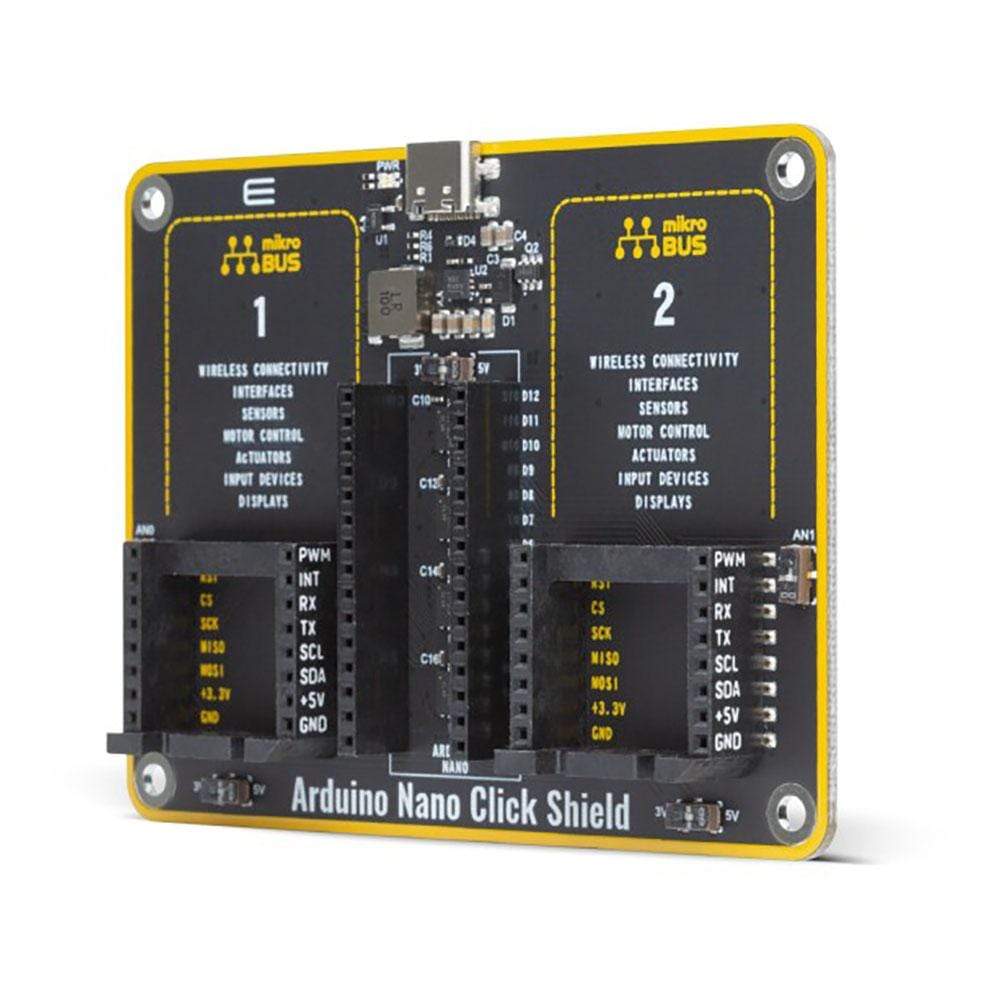
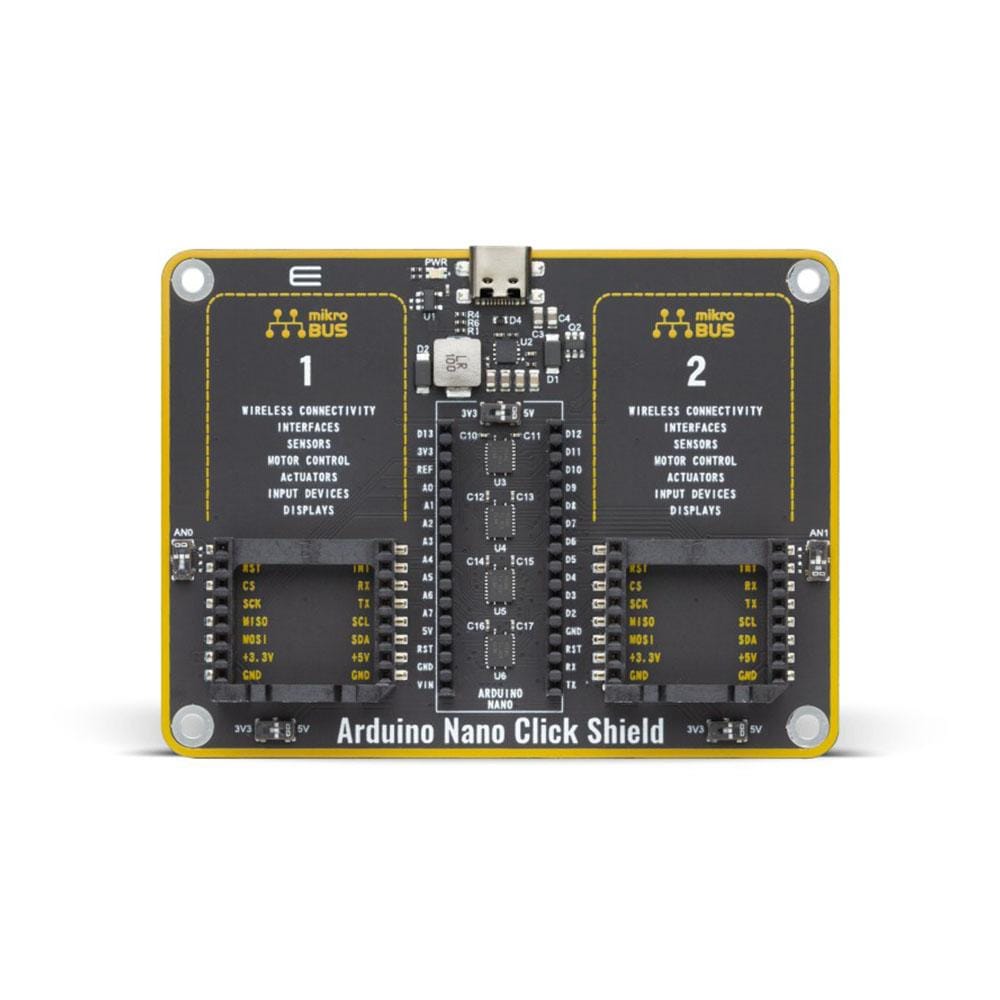
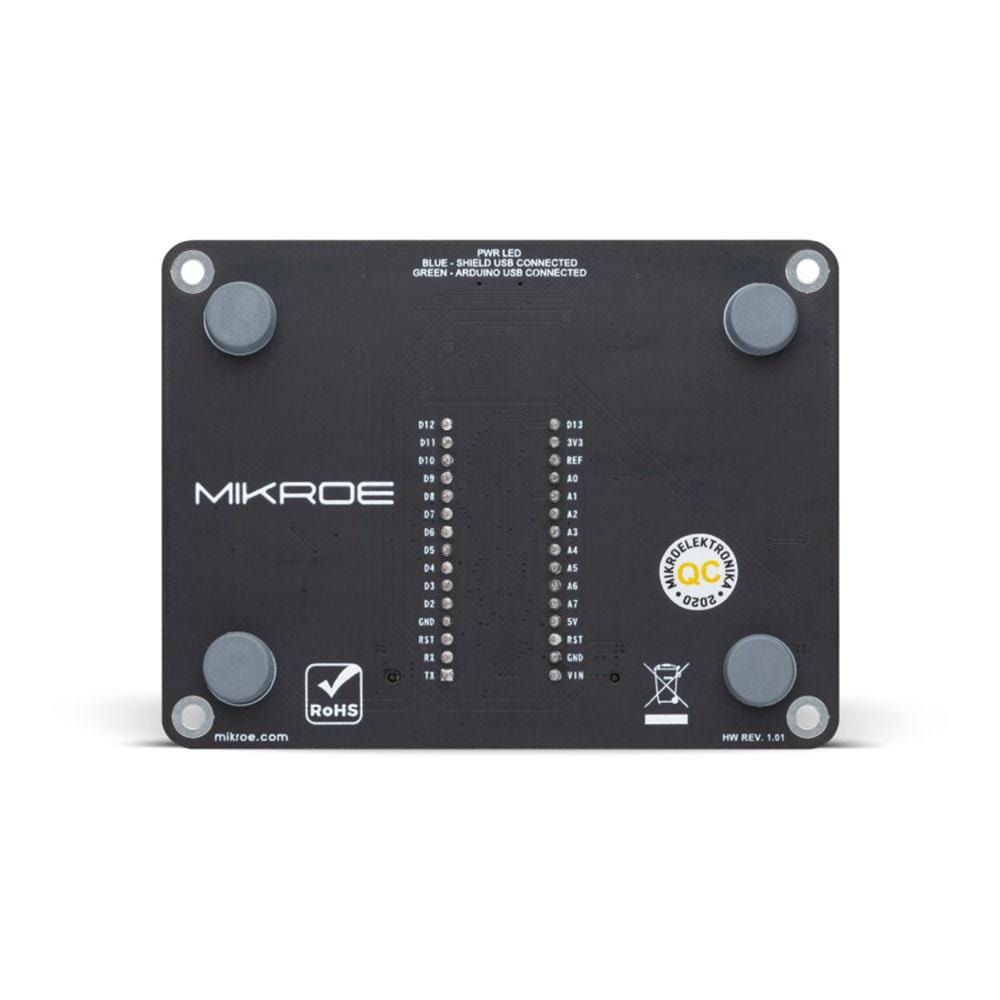
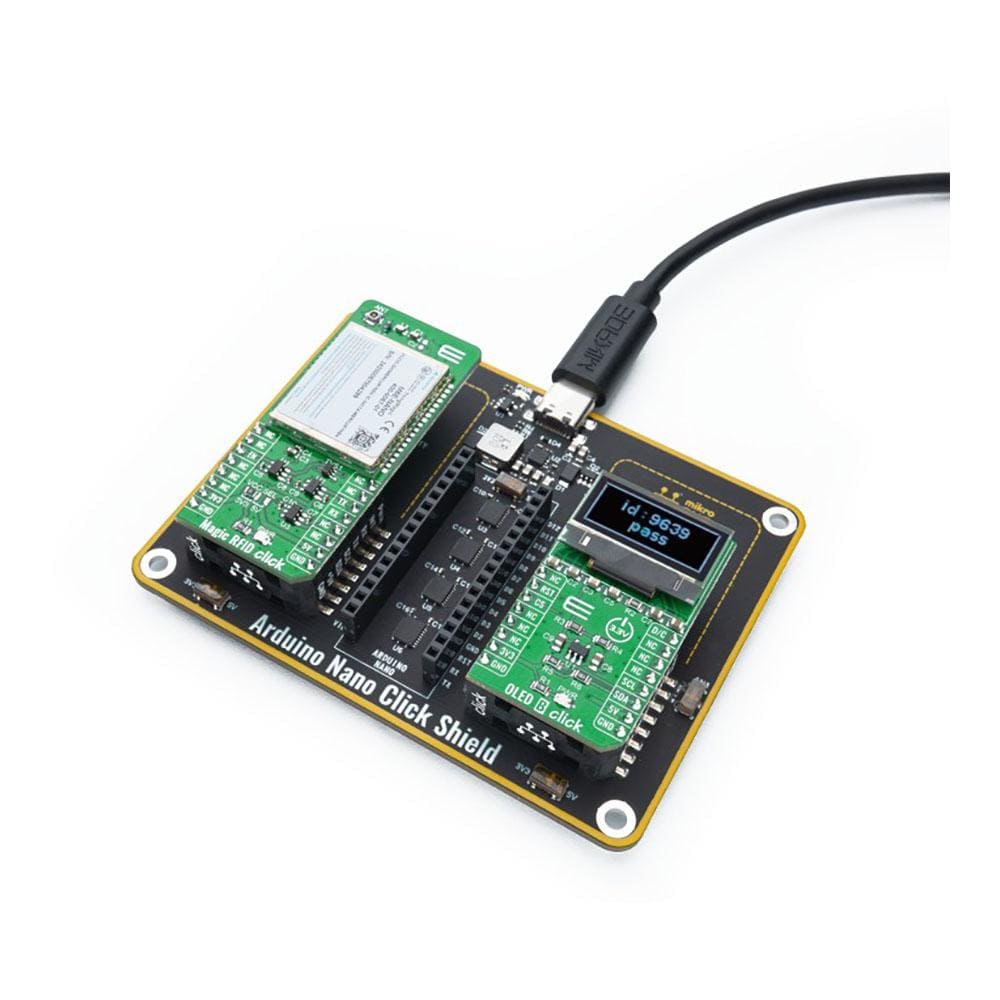
Main features
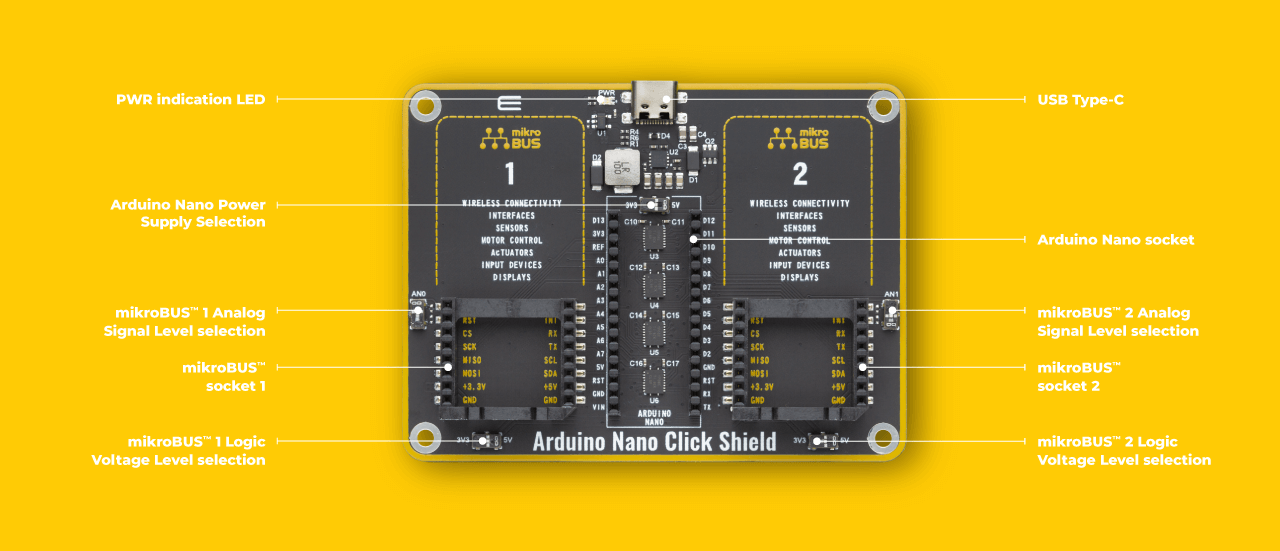
The Arduino Nano Click Shield comes equipped with two proprietary mikroBUS™ sockets, allowing all the Click board™ devices to be interfaced with the Arduino Nano boards with no effort at all. This way, Mikroe allows its users to add any functionality from our ever-growing range of Click boards™, such as WiFi, GSM, GPS, Bluetooth, ZigBee, environmental sensors, LEDs, speech recognition, motor control, movement sensors, and many more. More than 1051 Click boards™, which can be stacked and integrated simply, and conveniently, are at your disposal.
The Arduino Nano can be programmed with the Arduino Software (IDE), an Integrated Development Environment common to all Arduino boards, and runs both online and offline. The Arduino Nano Family of development boards comes pre-burned with a bootloader that allows you to upload new code to it without an external hardware programmer. The Arduino software includes a serial monitor that allows sending simple textual data to and from the Arduino board, with onboard RX and TX LEDs that indicates when data is transmitted. In addition, the Nano boards also supports I2C and SPI communication and includes a Wire library to simplify the use of the I2C bus. For more information on how to get started with the Arduino Software, visit the Getting Started page.
The Arduino Nano Click Shield also has several switches that perform functions such as selection of the logic levels of analog signals on mikroBUS™ sockets, as well as a selection of logic voltage levels of the mikroBUS™ sockets themselves. Besides, the user is offered the option of selecting the supply voltage of the Arduino Nano board itself with the possibility of using any Click board™ with the help of existing bidirectional level-shifting voltage translators, regardless of whether the Click board™ operates at 3.3V or 5V logic voltage level.
Once you plug development board compatible with the Arduino Nano footprint into the Arduino Nano Click Shield, it will allow you access to hundreds of Click boards™ working with 3.3V or 5V logic voltage level. For checking which Click boards™ are compatible with Arduino Nano Family of development boards, please open our Click Shop filter. Our Click boards™ are equipped with a library that contains functions and example codes for Mikroe compilers available on LibStock, which can be used, as a reference, for further development.
Power your Inventions

When the USB type C connector is connected to the Shield, the PWR diode will glow Blue, and at this setup, the connected Arduino Nano baseboard and two mikroBUS™ sockets will be powered from it.

When the USB mini connector is connected to the system board, the PWR diode will glow Green, and at this setup, the Arduino Nano baseboard itself will be powered and will provide power to the Shield including two mikroBUS™ sockets.

When the USB type C connector is connected to the Shield, and the USB mini connector is connected to the system board, the PWR diode will glow Cyan, and at this setup, the mikroBUS™ sockets are powered from the Type C connector. The system board is unloaded from delivering power to them and is powered from its source (USB mini), over which you can also upload the program to your board.
ARDUINO NANO TO mikroBUS™ PINOUT

Specification Table
| Type | Adapter,Shield |
| Applications | The Arduino Nano Click Shield allows the combination of any development boards compatible with Arduino Nano pinout with Click boards™. |
| On-board modules | Two mikroBUS™ sockets, connector for connecting compatible Arduino Nano board, four TXS0108E level-shifting voltage translators, power part for converting 5V USB to the 3.3V. |
| Interface | Analog,GPIO,I2C,PWM,SPI,UART |
| Compatibility | mikroBUS |
| Input Voltage | 3.3V or 5V |
Arduino Nano Click Shield
Frequently Asked Questions
Have a Question?
Be the first to ask a question about this.




